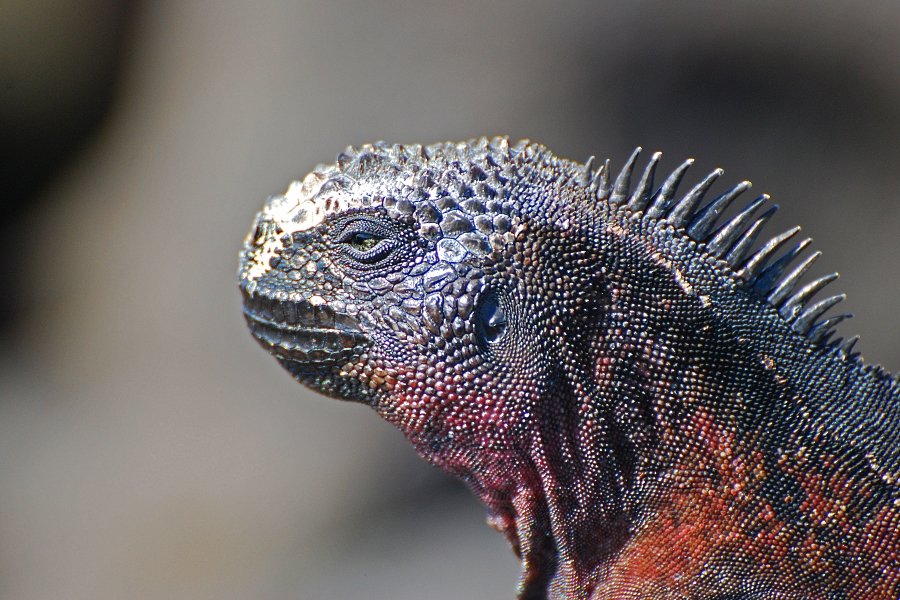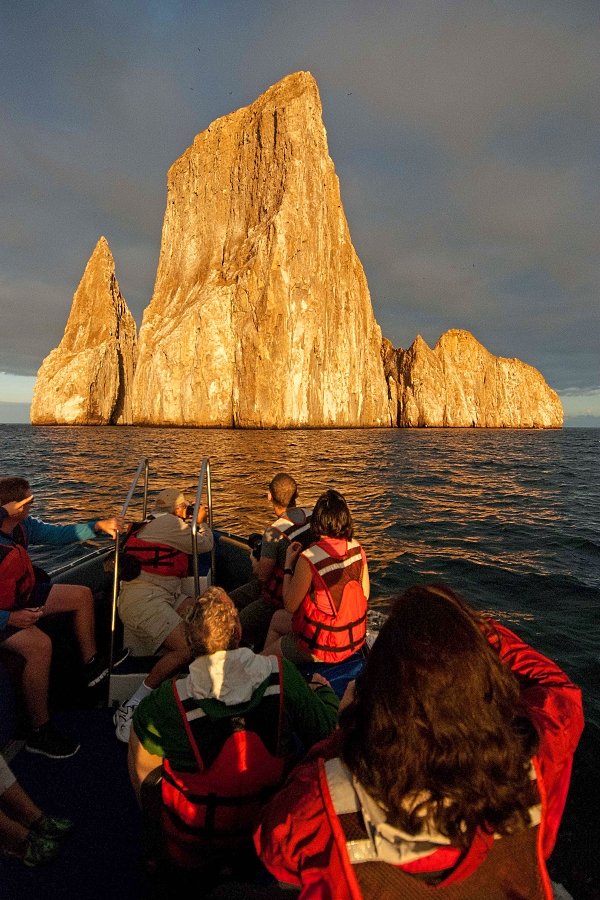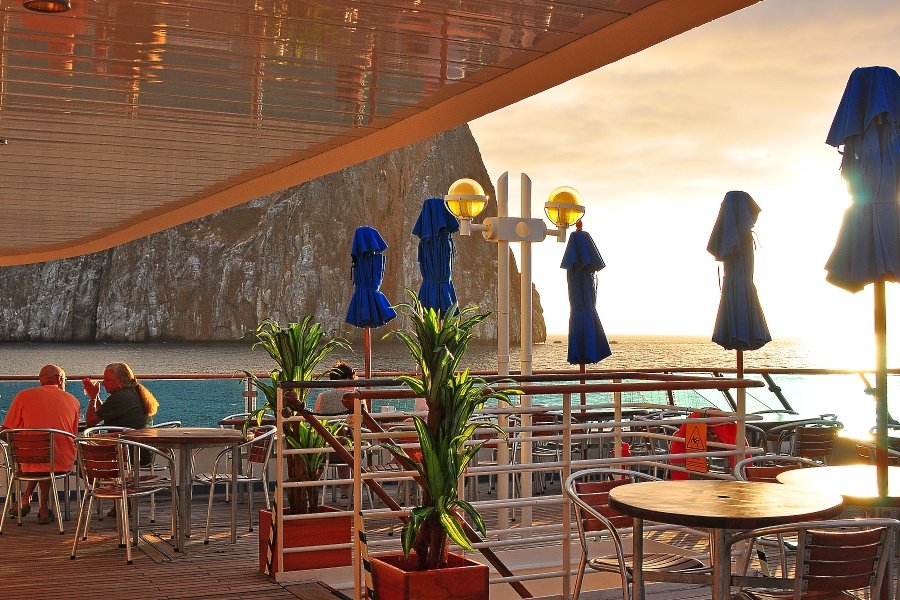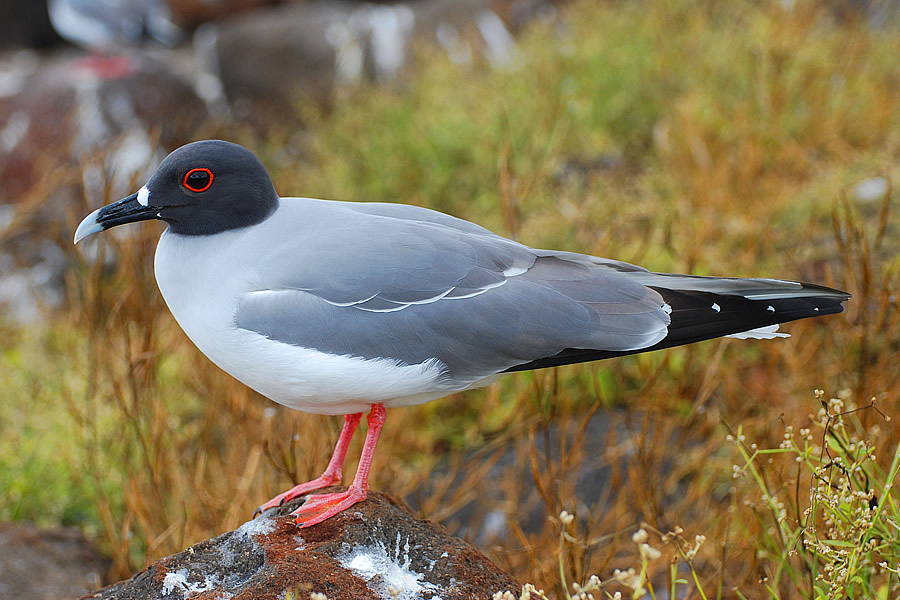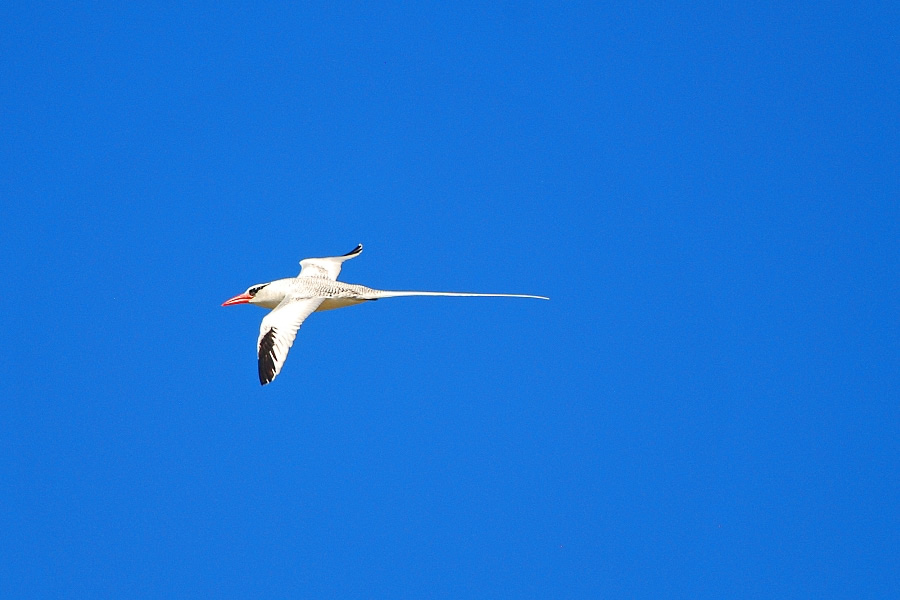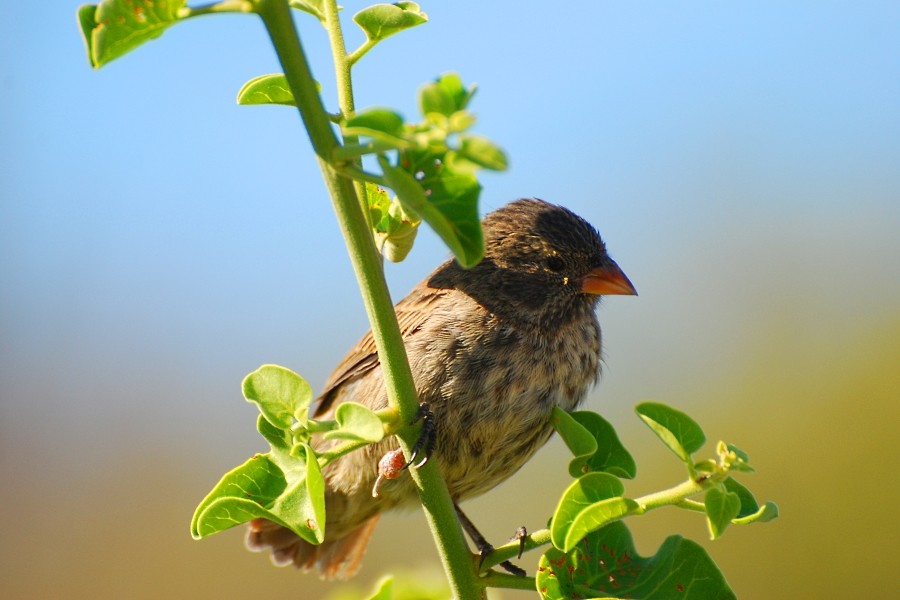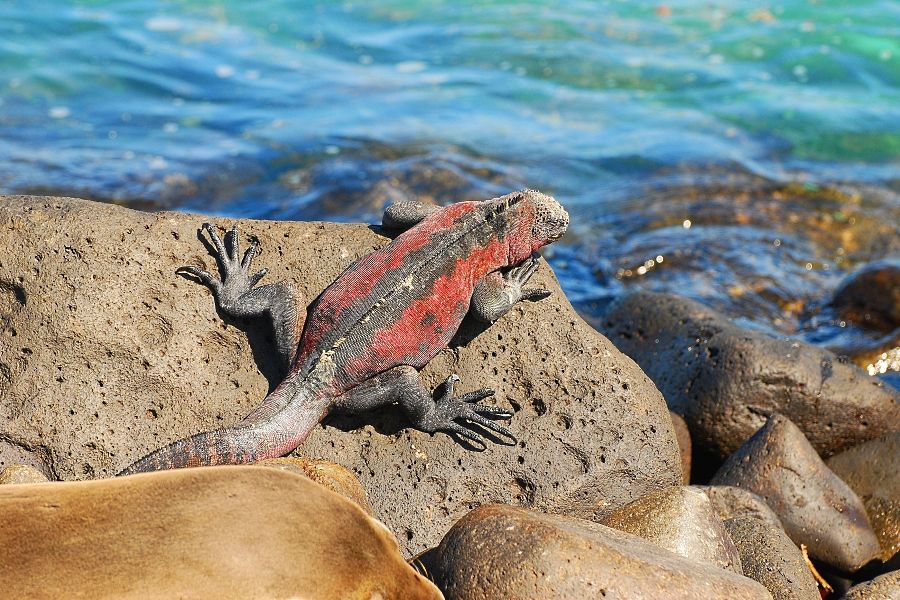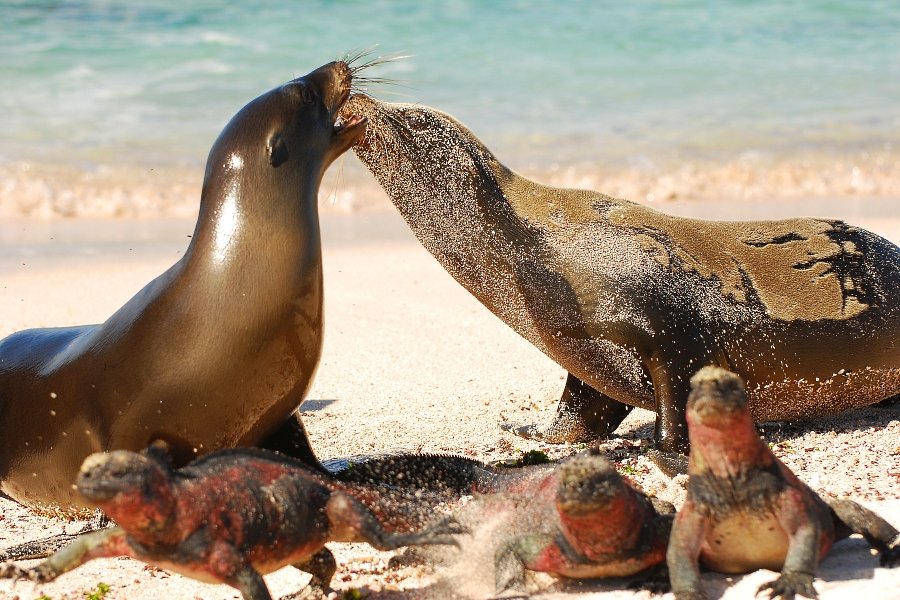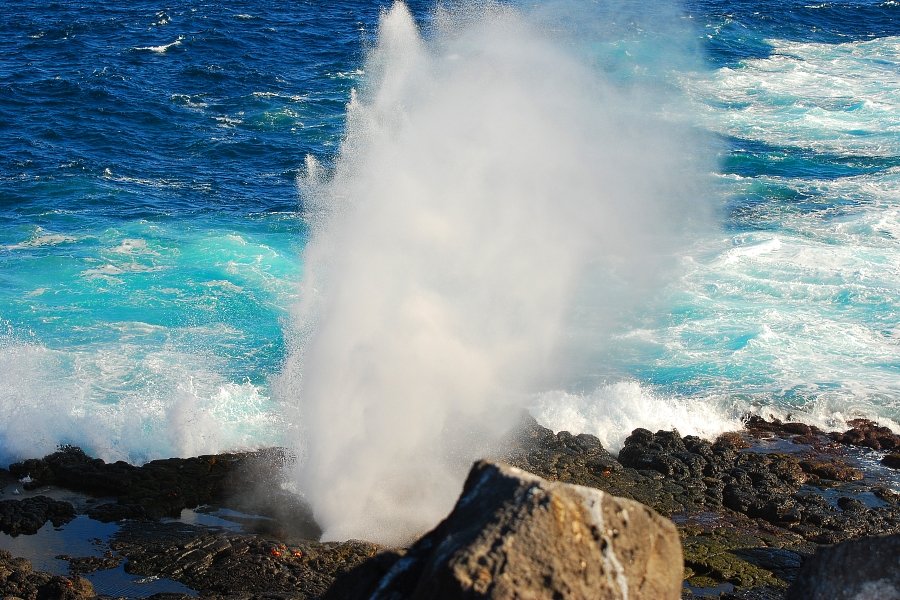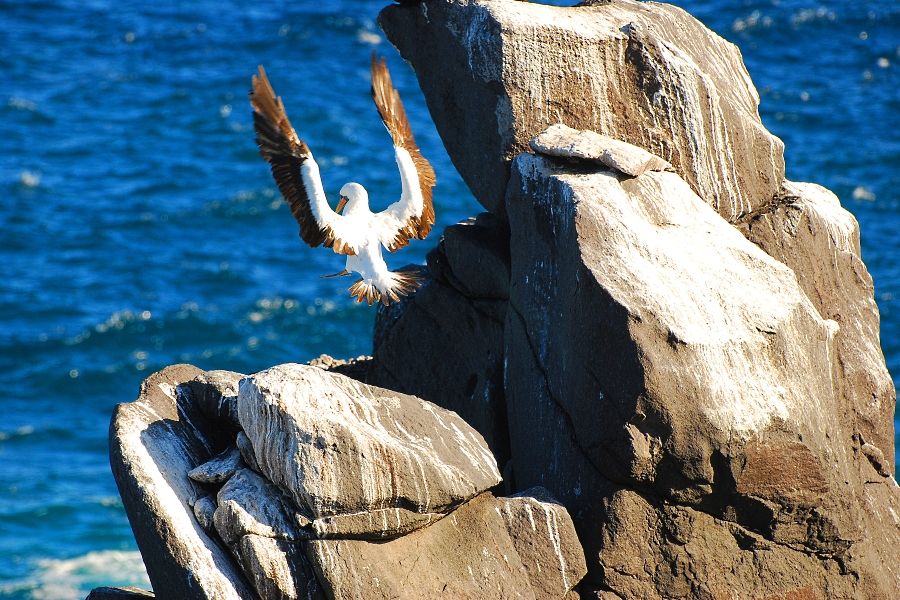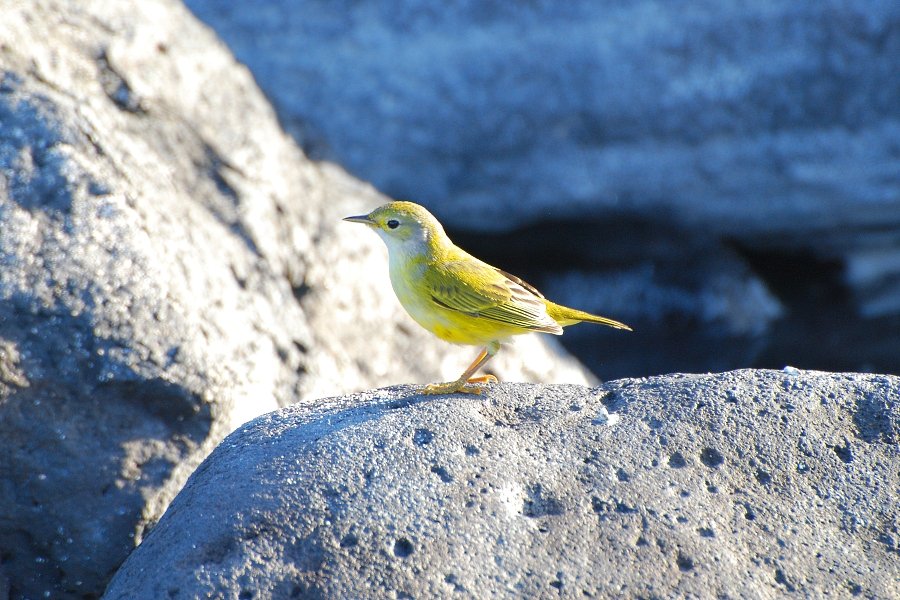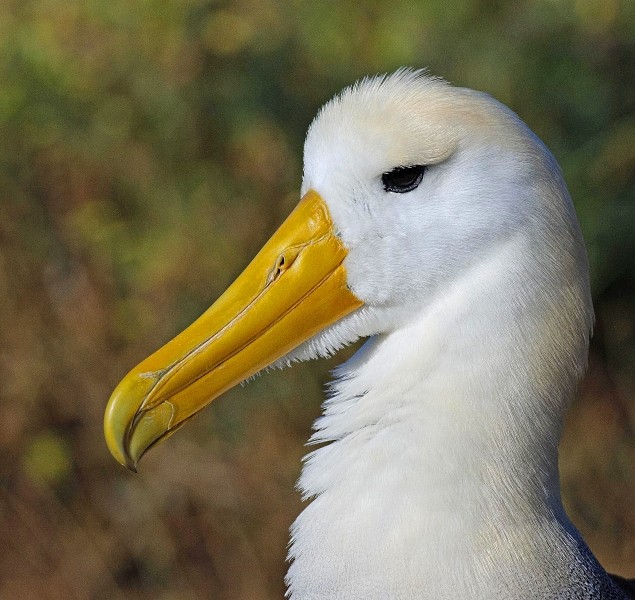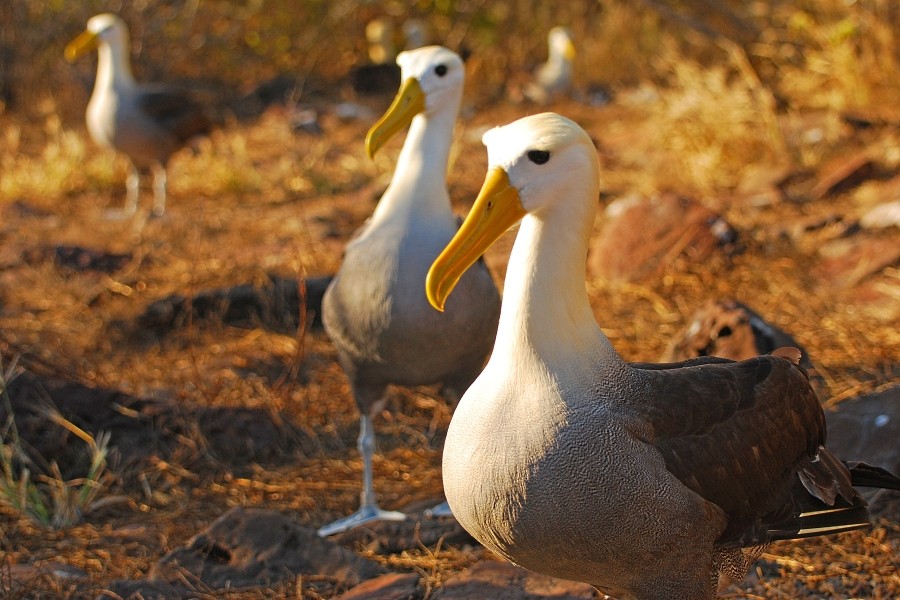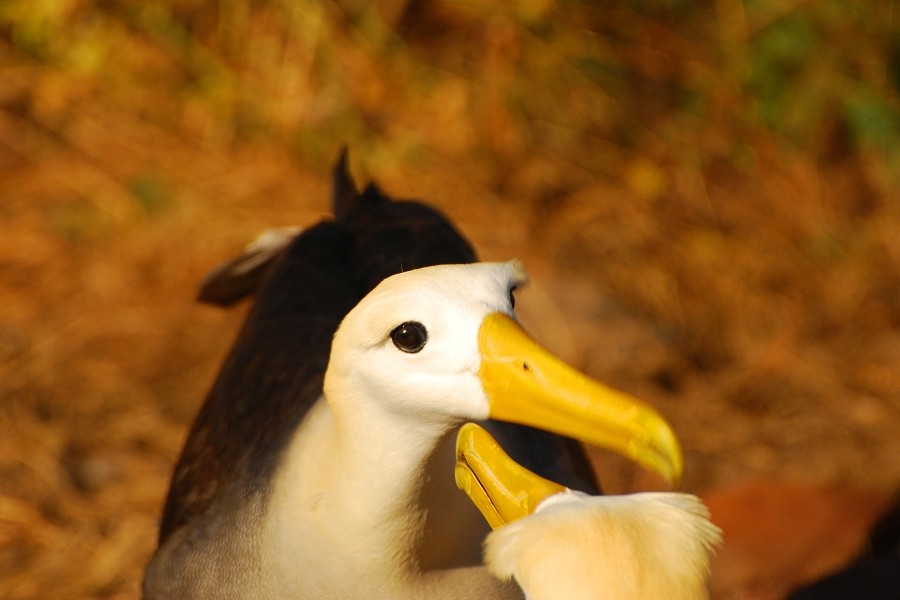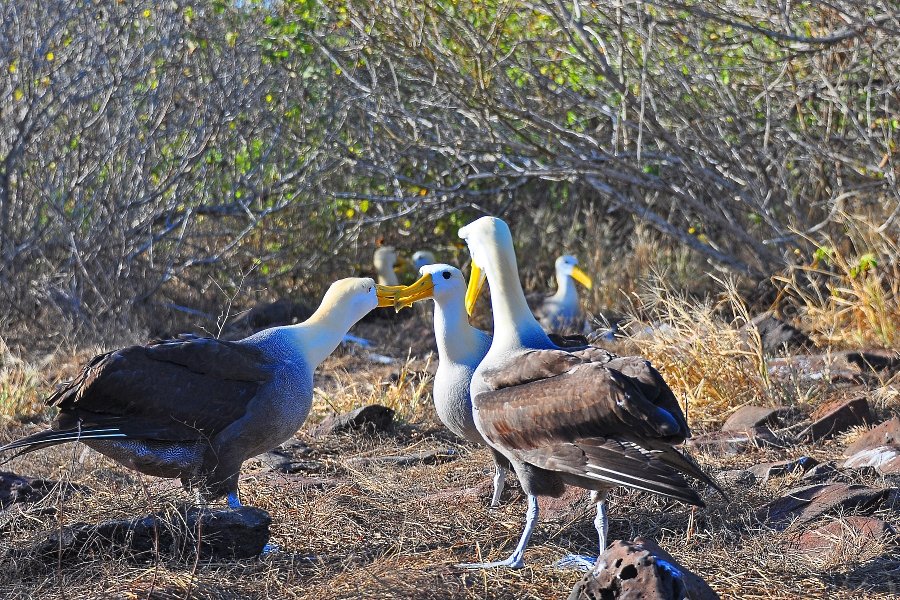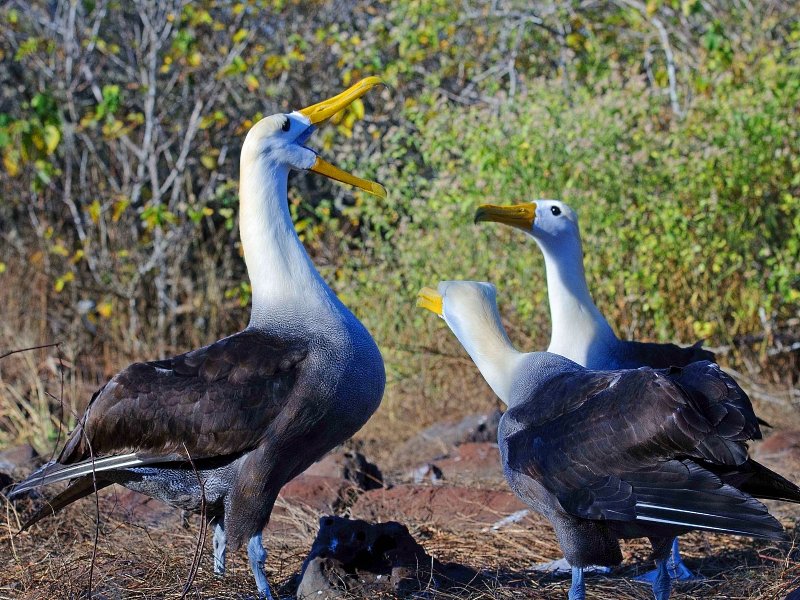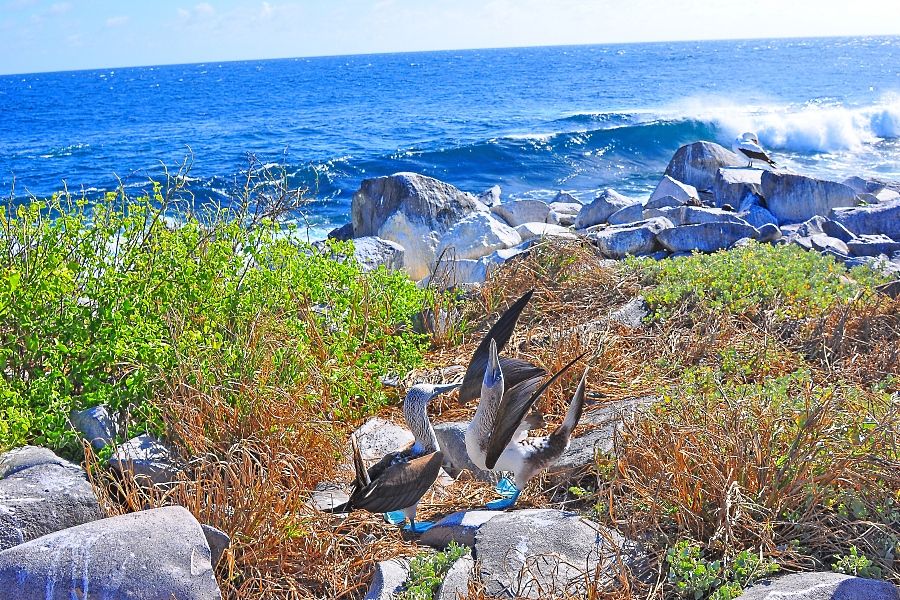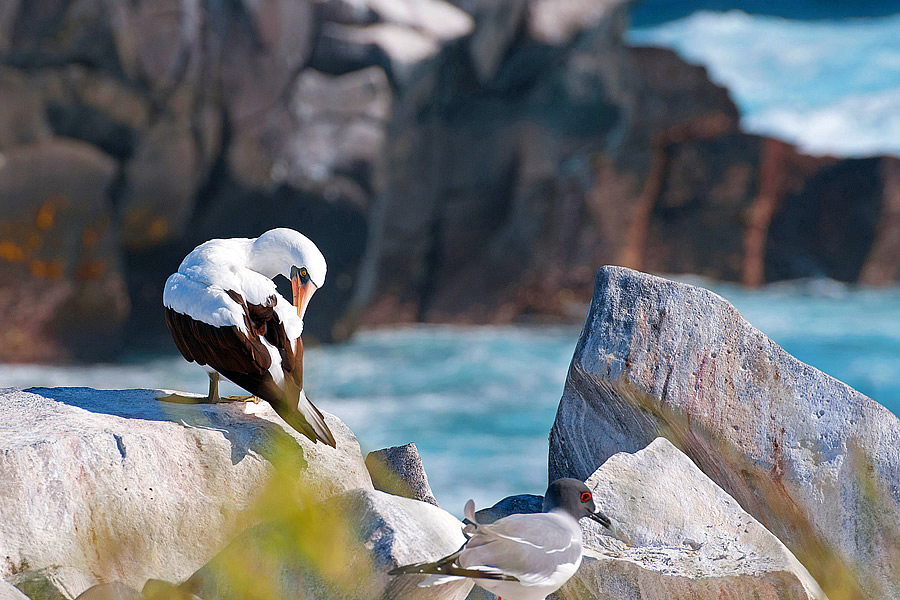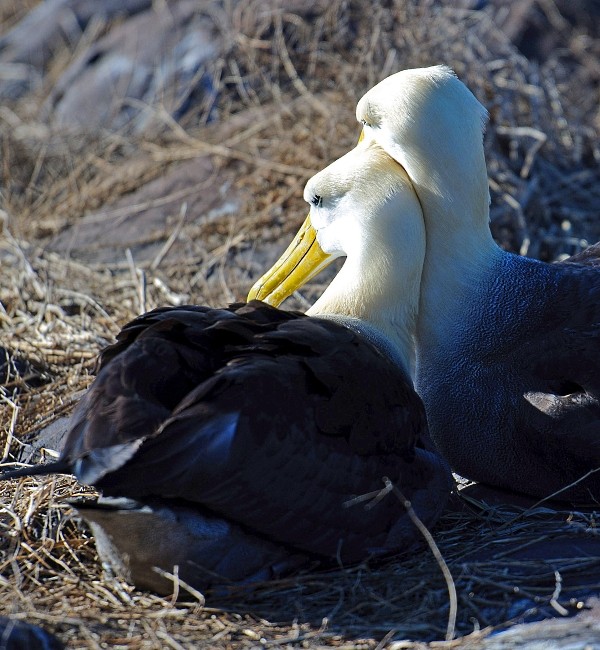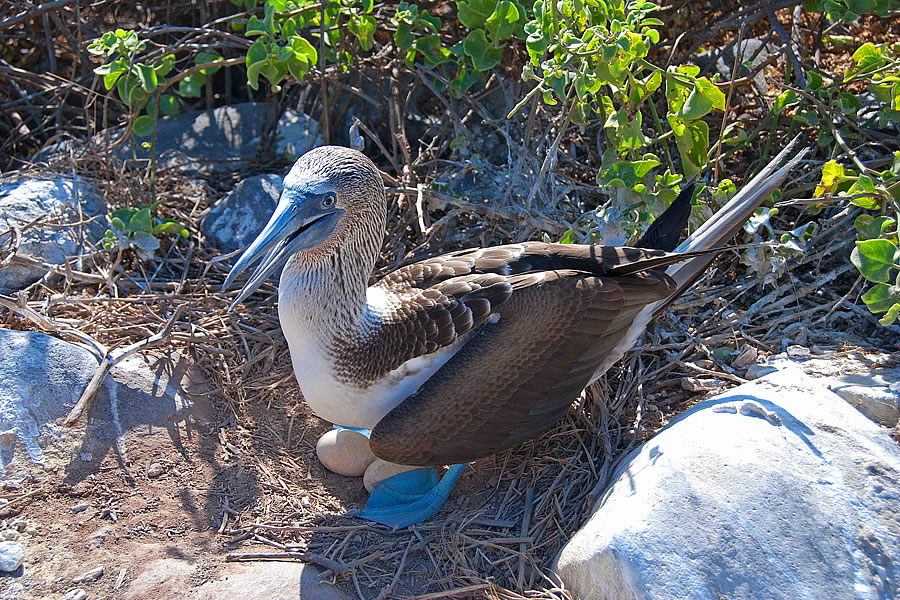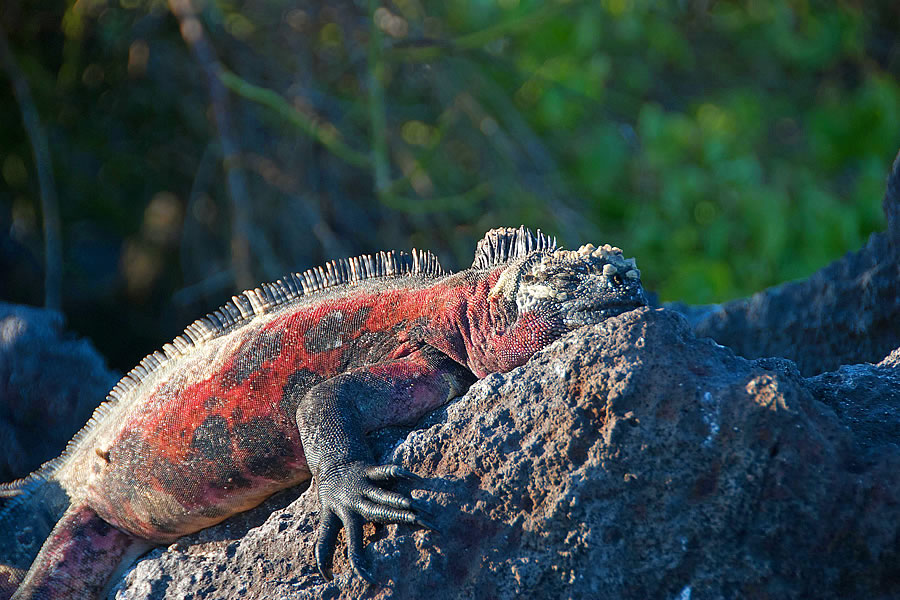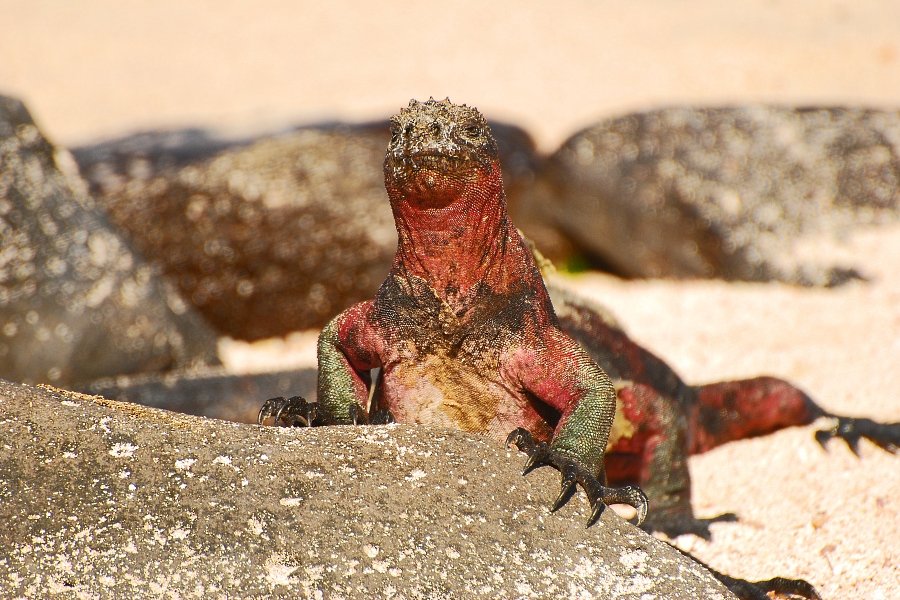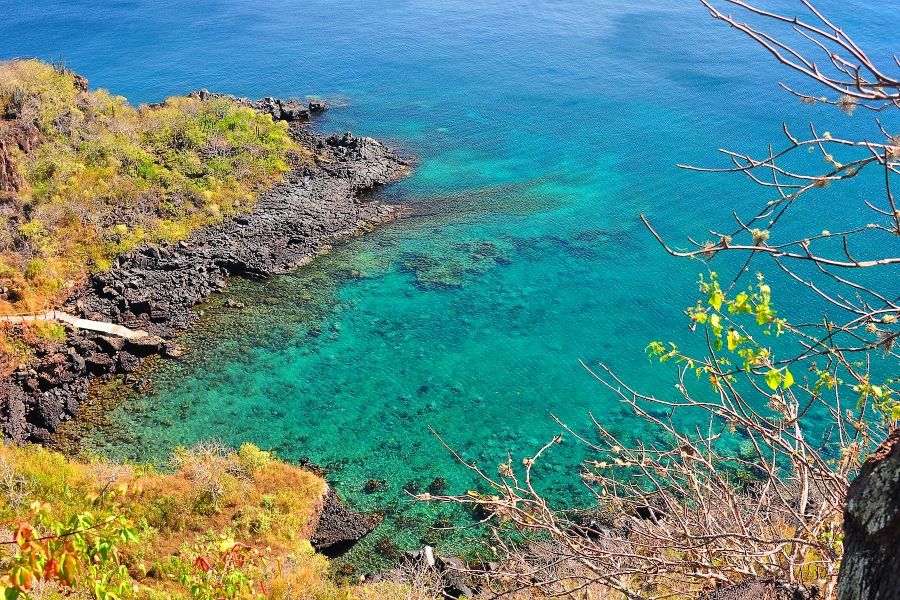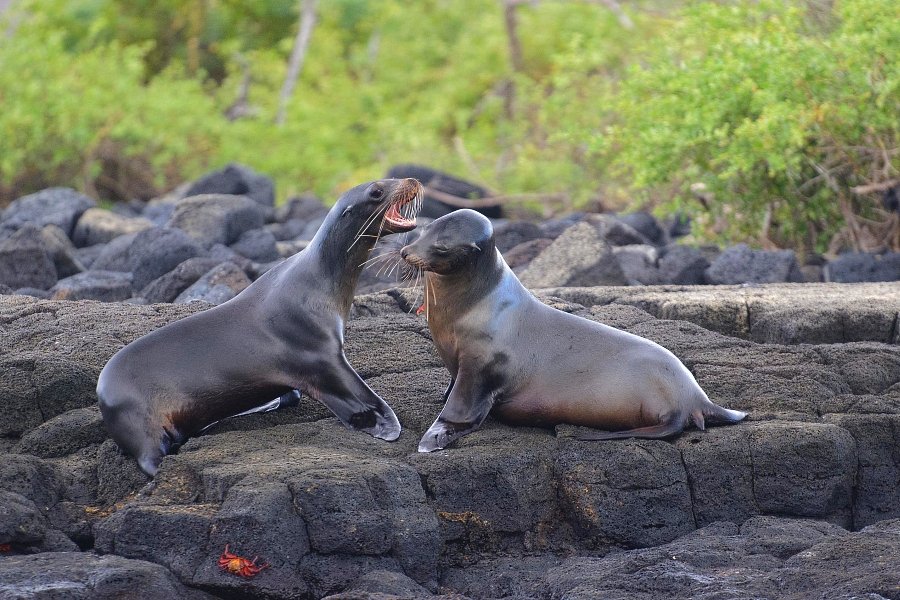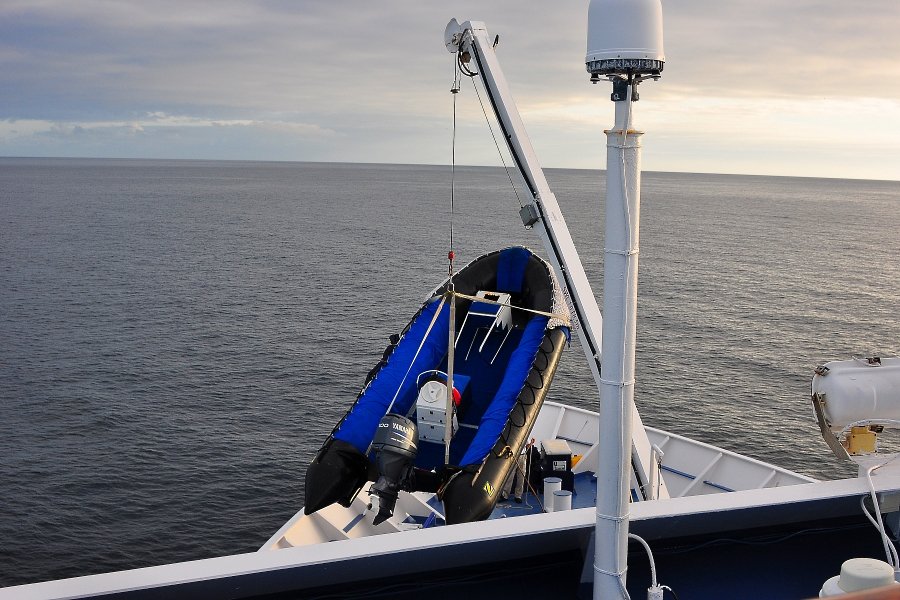Galapagos Cruise, Part 2: Sea Lions, Albatross and More
In the year 1535, the Spanish Bishop of Panama, Tomas de Berlanga, set sail for Peru. En route, his vessel was becalmed and swept hundreds of miles off course by a mighty current, to strange and uninhabited islands. Following is an excerpt from a letter he wrote about his discovery:
The sea was choppy in the early morning, with threatening gray clouds overhead and bands of falling rain on the horizon. We bounced along to the roar of our Zodiac's outboard motor, passing the partially exposed cone of an ancient volcano, called Devil's Crown.
We were miles from the ship when we arrived at Champion Island, a cactus-covered islet jutting out of the sea, and cut our engine. I pulled on my mask and fins, slipped my legs over the side of the Zodiac and disappeared into the Pacific Ocean.
Cold water breached my wetsuit at the neck and legs, and I kicked my fins with some urgency to warm up. In a minute I was acclimated, the wetsuit having done its job.

Our small group drifted in a strong current by the sheer walls of the island, above schools of fish, in 15 feet of water. Suddenly, they were there, our reason for coming to this spot, a trio of curious sea lions.
One looked me over, eye-to-mask, and two swirled gracefully around us, rising to the surface and then plunging to the ocean floor and vanishing into the murky beyond, only to reappear from a new direction, moments later.
Sea lions are among the most playful of all marine animals, and they predictably arrive to greet snorkelers in these waters. These three seemed entertained by the slow-moving land creatures with odd heads and big, flat feet. It's hard to smile around a snorkel mouthpiece, but I think I managed anyway.
Like all of the birds and animals here, they had no fear of us. For nearly an hour, they came and went, never far away, and we did our best to keep up with them.
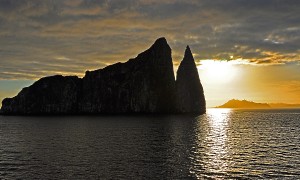 Yesterday, at sunrise, we circled Kicker Rock, the steeply rising remains of a volcanic cone. In the first light of day, the side facing the sun was brilliantly lit, but from the far side, Kicker Rock was equally impressive, two hulking black silhouettes.
Yesterday, at sunrise, we circled Kicker Rock, the steeply rising remains of a volcanic cone. In the first light of day, the side facing the sun was brilliantly lit, but from the far side, Kicker Rock was equally impressive, two hulking black silhouettes.
From there we sailed to San Cristobal Island and the laid-back town of Puerto Baquerizo Moreno. We took a long nature walk, spotted our first Darwin finch, visited the Interpretation Center and strolled the cobblestone streets of the town. We returned to the Xpedition for lunch as she sailed south again, to Espanola Island, the oldest and southernmost island in the chain.

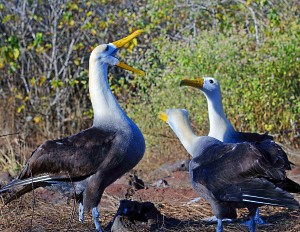
Espanola is known for spectacular wildlife viewing, and it did not disappoint. The most famous resident is the waved albatross, a beautiful and critically endangered bird with a yellow-and-cream colored head and neck, dark body, long yellow bill and a wingspan up to 8 feet.
The bird is a graceful glider and forages up to 600 miles away from the island, but her large wings make taking off difficult. On Espanola, the waved albatross takes off by running to the edge of a cliff and jumping off.
During our two hours on the island, we tiptoed through paths littered with marine iguanas, motionless except for eyes that followed us as we passed, and skirted albatross incubating their eggs on the ground. We watched a Galapagos hawk hunting for lava lizards, baby birds or iguanas. We stood at the edge of the steep cliffs on the south side of the island as waves pounded the rocks and forced water, through a blowhole, 50 feet in the air.
The highlight of the landing, for me, came as we stood in a line on the path to take photos of a pair of waved albatross sitting under a bush. First one and then the other stood up and waddled between members of our party to a clearing and began a long, noisy and entertaining mating ritual.
They bowed and paraded around each other with heads swaying side to side. They bent forward, facing each other, clicking their beaks together rapidly. They backed off, stood upright with bills held wide open and then slammed them shut with a loud clap.
The waved albatross mates for life and can live nearly 50 years, but they are being wiped out by longline fishing nets that snare the birds and kill them when they dive for fish that are already caught. Such nets are but one of the many man-made hazards threatening various species in these islands.
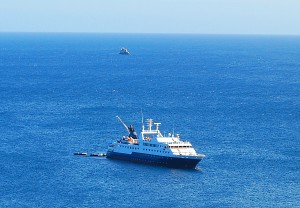
By now, we have settled into the ship's routine: one or two morning landings, followed by lunch and relaxation onboard in the warmest part of the day, and another landing in the late afternoon. There is a briefing in the early evening to describe the following day's landing spots and activities.
For each landing, there are two options varying in length and difficulty, accommodating a wide range of physical capabilities.
The experience onboard the Xpedition has been excellent, and we find ourselves busy all the time. The officers and crew are unfailingly efficient and courteous, and the food and service in the dining room and aft grill are very good.
Tomorrow, we hope to see the rare Galapagos penguin, most likely carried to these islands at some ancient time by the powerful Humboldt Current. This current originates in Antarctica, travels north along the coast of South America to northern Peru and then west, all the way to the Galapagos.
The cold Humboldt Current is the reason why these islands on the equator experience average temperatures in the 70s year-round. It sustains the penguin population and supports one of the most fertile marine ecosystems on the planet, responsible for 20 percent of the world's fishing catch.
If the Humboldt brings life to the Galapagos, it has also brought death, for it is the same current that carried de Berlanga here almost 500 years ago, and the pirates and whalers who followed. They changed the Galapagos forever, and I'll cover that next week, in my final report from the islands.
To read more about the Galapagos Islands, please click to visit GalapagosCruise.com.
Sincerely,
Alan Fox
Executive Chairman
Vacations To Go
Related newsletters:
Galapagos Cruise, Part 1: Quito & North Seymour Island
Galapagos Cruise, Part 3: Santa Cruz, Bartolome, Isabela and Fernandina
Peru Trip, Part 1: En Route to Machu Picchu
Peru Trip, Part 2: Cuzco, Gateway to Machu Picchu
Peru Trip, Part 3: The Lost City of the Incas

